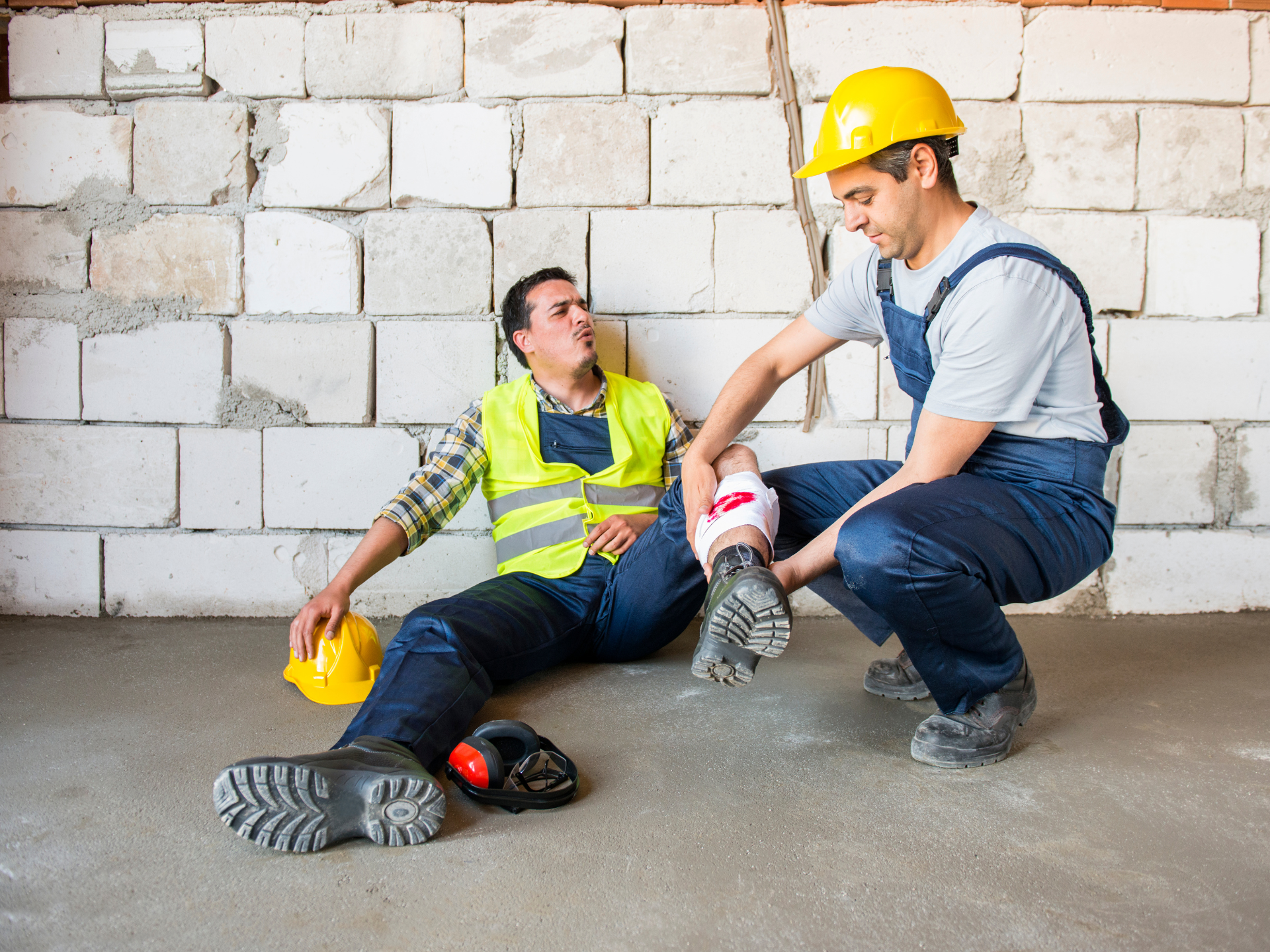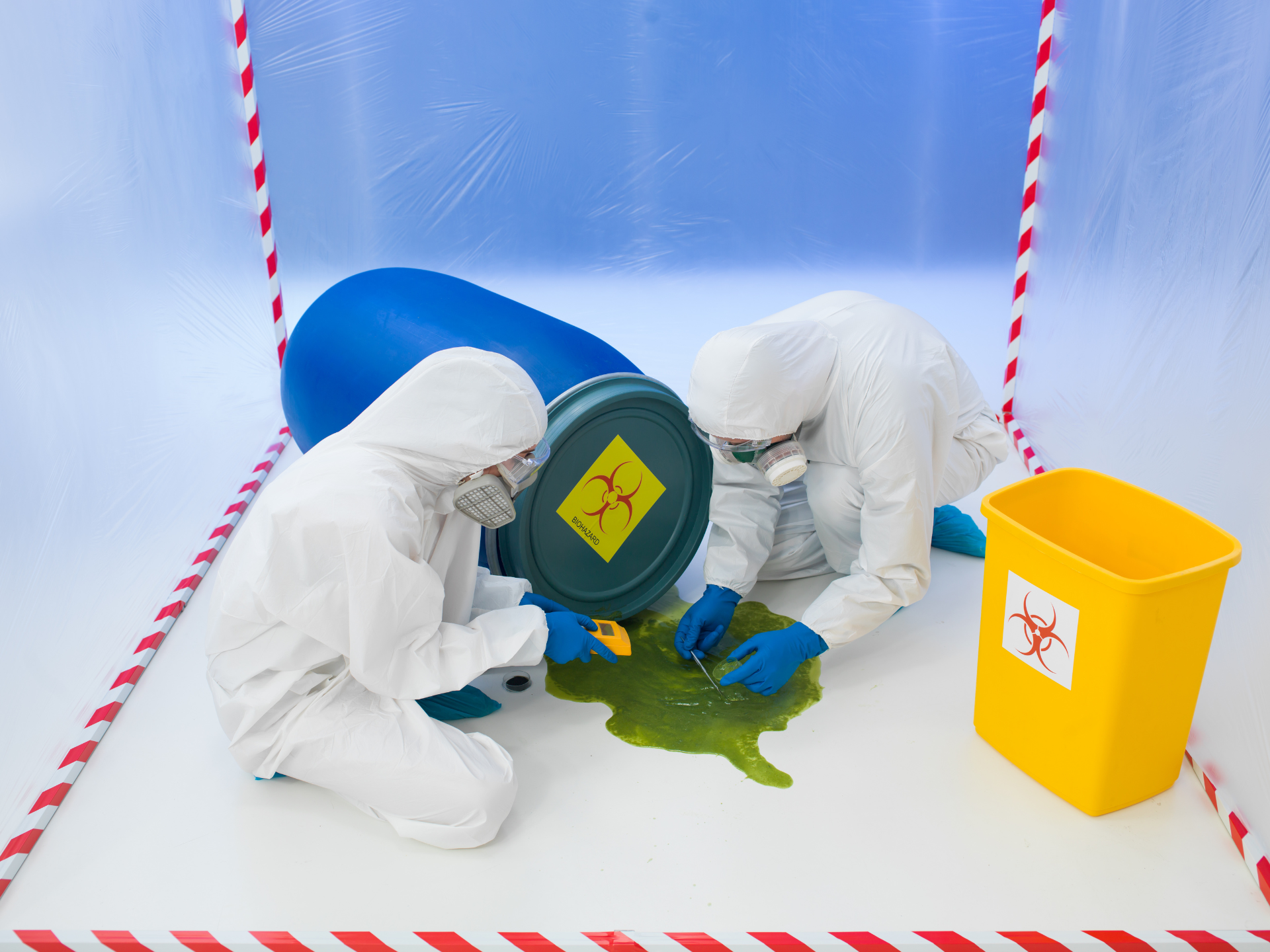As a business owner, the safety of your employees should be one of your top priorities. But no matter how careful you are at creating safe working conditions and encouraging good practices, incidents can still happen in the workplace. If an incident or injury occurs on your watch, it’s important to know how to handle the situation correctly—both for legal and employee wellbeing reasons.
Poorly handled workplace incidents can not only damage your reputation and costs you money in damaged goods, lost productivity and legal fees, but they can also put your team at risk if proper safety measures are not taken. This is why it is critical that all business owners know how to handle a workplace incident correctly. In this article we’ll talk about the steps you should take after a workplace incident has occurred as well as strategies for preventing future mishaps from happening again. Read on to learn more!
What is a workplace incident?
A workplace incident is any event or occurrence that results in an injury, damage to property, or other adverse effect on personnel. This includes slips, trips and falls; chemical spills; equipment malfunctions; fires; and more. In some cases, incidents may be minor and require only a few steps for resolution—such as providing first aid to an injured employee. Other incidents may be more serious and require further investigation to determine the cause and take preventive measures for future occurrences.

Why is it called a workplace incident and not an accident?
The term ‘accident’ implies that something happened by chance and could not have been prevented. This can lead to the incorrect conclusion that nothing could have been done differently and the incident was unavoidable. The term ‘incident’ is used instead to emphasise that there are often steps which can be taken to prevent a similar event from occurring in the future. This encourages employers to consider all possible factors which may have contributed to the incident and take corrective action.
Why is it important to know what to do before a workplace incident occurs?
Knowledge of what to do before, during and after a workplace incident can limit the damage caused by the incident to workers and the business. It also helps to ensure that all necessary steps are taken in a timely manner and proper protocols are followed. This reduces the risk of further injury or damage, legal repercussions, and protects the wellbeing of your employees.
When something bad happens, it’s normal to panic or be overwhelmed. However, it is important to remain calm and take appropriate action in the right order as soon as possible when a workplace incident occurs, and by having procedures in place it can help to ensure that all appropriate steps are being taken.
What steps should you take following a workplace incident?
Ensure everyone is safe
Your first priority after a workplace incident has occurred is to ensure that everyone involved is safe and out of harm’s way. If medical attention is necessary, call 000 and arrange for an ambulance to attend the scene.
Secure the area
Once everyone is safe, secure the area by closing off access to prevent further injury or damage from occurring. Make sure that any machinery or equipment involved in the incident is switched off and unplugged.
Depending on the severity of the incident, you may be required to notify various authorities such as your state regulator or local law enforcement. Make sure you are familiar with your state’s regulations in order to ensure that all necessary parties are informed and steps taken to investigate the incident and take corrective action. We will discuss what is a notifiable incident further down.
Document the incident
It is important to document all relevant information as soon as possible while it is still fresh in your mind. This includes taking photos, recording statements, and gathering any other evidence which can help you determine what happened and how best to prevent similar incidents from occurring in the future. This should include filling in a workplace incident form.
Investigate the incident
Once authorities have been notified and the scene has been secured, it is time to conduct a full investigation into what happened. This should include talking to witnesses and employees involved in the incident as well as analysing any evidence collected at the scene. If it is a notifiable incident, you should not conduct your own investigation until the relevant authorities have completed theirs.
Identify the cause of the incident
Once you have completed your investigation, it should be clear what caused the incident. This could be a piece of faulty equipment, lack of safety protocols, failure to follow procedure, or another factor which led to an injury or damage. Identifying the cause is essential as it allows you to develop strategies for preventing similar incidents from happening again in the future. Sometimes it is more than one cause and infact a series of failures which lead to an incident. It is important to identify all causes in order to prevent them from happening again.
Develop and implement corrective actions
Once you have determined the cause of the incident, it is important to take action to prevent similar incidents from occurring in the future. This may include introducing new safety protocols or updating existing ones, providing more training and education for employees, or replacing faulty equipment with newer models.
Communicate and consult with workers
It is important to keep workers informed and consulted throughout the process. This includes notifying workers when an incident has occurred, involving them in the investigation process, and consulting them on any corrective actions which are taken. Keeping everyone involved and informed helps create a more open, safe environment in which all stakeholders feel secure.
Monitor and review corrective actions
Once corrective actions have been implemented, it is important to monitor and review them regularly. This will help you identify whether the corrective actions you have put into place have been effective and if any improvements can be made. It is also important to ensure that employees are following the new protocols or procedures so that similar incidents do not occur again.

What is a ‘notifiable incident’?
In Australia each state has different laws about what is deemed a ‘notifiable incident’, meaning what kind of incident requires a business owner to notify the state regulator.
Generally a ‘notifiable incident’ is any incident which results in death, serious injury, illness or dangerous occurrence. This includes incidents such as an employee being injured while using machinery, or employees becoming ill due to exposure to hazardous substances. It is important to familiarise yourself with your state’s laws to ensure that all notifiable incidents are reported appropriately.
Why is it important to investigate a workplace incident?
Investigating workplace incidents is important for two reasons: first, to determine the cause of the incident and take preventive measures to ensure it does not happen again; and second, to assess any liability issues which may be involved. Failing to investigate an incident can lead to problems in both of these areas—potentially resulting in legal action or further injuries.
How do I interview an employee or witness for a workplace incident?
It is important to be respectful and professional when interviewing an employee or witness for a workplace incident. Ask open-ended questions to encourage the person to explain their experience in detail. Take careful notes of all responses, including both facts and opinions. If possible, record the interview so that you have a full written account which can be referenced later on. Make sure to thank the person for their time and explain how you will use the information they have provided.
Above all, it is important to treat every employee or witness with respect and make them feel comfortable throughout the process. This will help ensure that everyone involved feels safe and secure in providing their account of what happened.
Remember, when interviewing employees or witnesses to find out what happened, you aren’t looking to assign blame. And, also remember that they may have been a part of something traumatic and that the best approach is an empathetic one.
By following these steps, you will be able to get a better understanding of what happened during an incident or injury in the workplace.

What sort of questions should I ask a witness of a workplace incident?
When interviewing a witness of a workplace incident, it is important to ask questions which will provide you with a comprehensive understanding of what happened. Some good questions to ask include:
- What did you see or experience?
- Did anyone else witness the incident?
- Was there any warning before the incident occurred?
- What happened immediately after the incident?
- Did anyone provide first aid or medical assistance?
- How do feel this workplace incident could have been prevented?
These and other open-ended questions will help you gain a better understanding of what happened during the workplace incident. It is important to remember to be respectful and professional when asking these questions, as well as being mindful of any emotional distress your witness may be experiencing.
What sort of evidence should be collected after a workplace incident?
When collecting evidence after a workplace incident, it is important to collect all relevant documents and materials. This includes any photos or videos taken at the scene of the incident, as well as written accounts from witnesses and employees. Additionally, collecting records such as an employee’s medical history or workplace safety reports can provide further insight into what happened.
It is also important to collect physical evidence such as any tools or machinery involved in the incident. This can help identify if there were any mechanical issues which could have been a contributing factor.
Finally, it is important to store all evidence in a secure location so that it remains safe during an investigation. This will ensure that the evidence can be used to determine the cause of the incident and to help prevent similar incidents in the future.
What sort of record-keeping should I use after a workplace incident?
After a workplace incident, it is important to keep accurate records of the event. This should include any evidence gathered, such as photos or videos taken at the site of the incident, as well as interviews conducted with witnesses and employees involved. All reports and corrective action plans should also be kept on file for future reference.
Record-keeping is very important when it comes to workplace safety in general, and even more so after an incident or injury has occurred. You may have to provide documentation of your safety procedures, your investigation of the incident, and any corrective action taken to the regulator, law enforcement or to courts if someone takes legal action against you.
You should also ensure that all relevant state laws and regulations are followed when dealing with the incident, including reporting it to the relevant authorities and that you keep evidence of such for your own records.
Keeping accurate records of a workplace incident will help ensure that similar incidents do not occur again in the future, as well as helping you create new protocols or procedures to prevent any further incidents.

What is a workplace incident form?
A workplace incident form is an important document that should be used whenever any type of injury or accident occurs in the workplace. It should contain detailed information about the incident, including date and time, location, description of the incident, name of person/s involved, their contact details and what actions were taken to resolve the issue. Other essential information includes any witnesses to the incident, photos or videos taken at the scene and any corrective action plans that were implemented.
It is important to ensure that all fields in the workplace incident form are filled out accurately and thoroughly. Once completed, it should be signed by both the employee who was involved in the incident and a supervisor who can provide additional information if required. The form should then be kept on file for future reference.
Keeping accurate records of a workplace incident will help ensure that similar incidents do not occur again in the future, as well as helping you create new protocols or procedures to prevent any further incidents. By ensuring that all workplace incidents are recorded properly and stored securely, your workplace will be in a much better position to respond quickly and effectively to any future incidents.
How do I write a Workplace Incident Procedure or Policy?
When writing a Workplace Incident Procedure or Policy, it is important to consider the different steps that need to be taken in order for the incident to be properly managed and investigated.
The procedure should include details of what steps need to be taken when an incident occurs, such as who needs to be informed and how they should be contacted, as well as what sort of evidence needs to be collected. It should also include any safety measures that need to be taken in order to protect employees while the incident is being investigated and how the investigation will be conducted. It should also include whose role it is to investigate the incident and any corrective actions that need to be taken following the investigation.
It is also important to ensure that all relevant state laws and regulations are adhered to, such as reporting the incident to law enforcement or other authorities if necessary.
Finally, it is essential to ensure that your Workplace Incident Procedure or Policy is properly communicated to all employees so they know what to do in the event of an incident occurring in the workplace. This should include regular training and reinforcement so that employees are aware of their roles in the event of an incident or injury, as well as being familiar with the policies.
By having a comprehensive Workplace Incident Procedure or Policy, you can help ensure that any incidents or injuries occurring in your workplace are properly managed and investigated.
Workplace Incidents Toolbox Talk
As an employer, it is important to ensure that all employees are aware of the potential risks and understand how to respond in the event of a workplace incident.
One way to do this is through regular Toolbox Talks, which involve discussing safety topics within the workplace with your employees. This provides them with the opportunity to raise any issues they may have, as well as enabling you to provide information on safety topics and any new protocols or procedures that need to be followed.
During the Toolbox Talk, it is important to cover what constitutes an incident or injury in the workplace and how employees should respond if one occurs. This could include things such as notifying a supervisor immediately, following emergency protocols and providing first aid where necessary.
It is also important to discuss any new policies or procedures that have been introduced following the incident, as well as any corrective actions taken in order to prevent similar incidents from happening again in the future.
How often should a Workplace Incidents Toolbox Talk be given?
By having regular Toolbox Talks, you can help ensure that all employees are aware of how to respond in the event of an incident or injury in the workplace, as well as providing them with the opportunity to raise any concerns or issues they may have.
It is recommended that a Workplace Incidents Toolbox Talk should be given at least once a year, however this may vary depending on the size of your organisation and the number of incidents that you experience.
By having regular Toolbox Talks and ensuring that all employees are aware of their roles in the event of an incident or injury, you can help ensure that incidents are managed effectively and any corrective actions taken in a timely manner.
You can find out more by reading 5 Toolbox Talk hints and tips to make your life easier
In conclusion,
Unfortunately incidents and injuries are a reality in the workplace, but with sound planning and knowledgeable responses, employers can minimise their risk. Following protocols in responding to incidents is key and preparing for the unexpected can put you and your business in an advantageous position and help control potential losses. Keeping these tips on hand and adhering to safety guidelines can help everyone stay healthy and productive—even during a trying time. Remember that the main priority when dealing with any incident in the workplace should always be the safety of those involved. With a bit of foresight, you’ll be better equipped to tackle whatever comes your way.
How can Safe-R Outcomes help your business?
Our Professional subscriptions contain many essential documents including:
- WHS Management Plans / Safety Manuals
- SWMS (if the job entails high risk tasks)
- a range of SOPs, Registers, Toolbox Talks, Checklists and Policies
These can all be downloaded and are not blank templates, so can be used immediately.
We also provide Induction training to help you on-board new employees and contractors.
As you can see it is all done for you so it makes it nice and simple. You can find out more on the Industries and Professions page.
If you’re concerned about the time commitment and knowledge required to implement the correct documents, procedures and training for reducing workplace stress, Safe-R Outcomes can help. We strive to reduce the time and cost for businesses to implement their legally necessary safety requirements.


